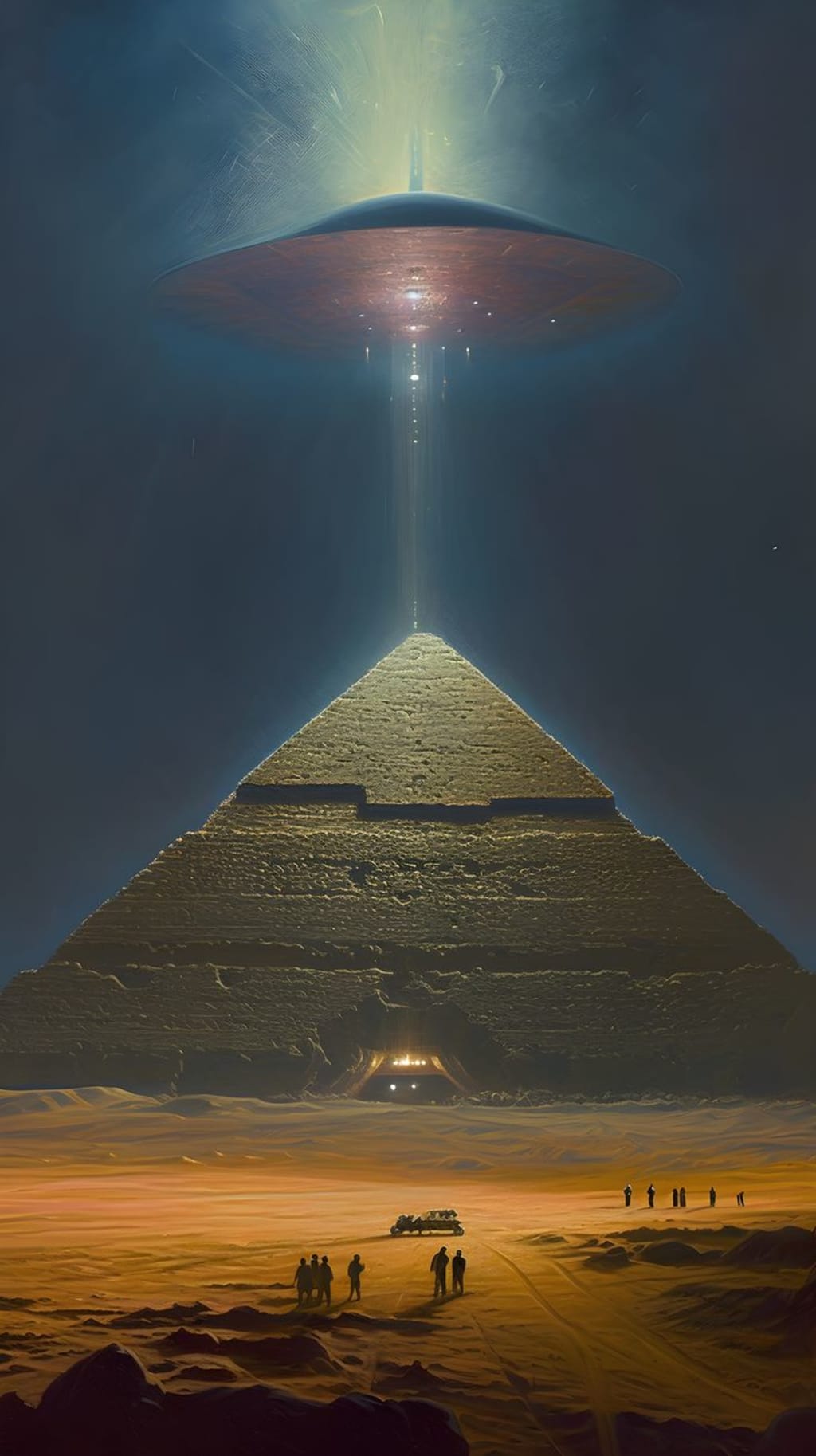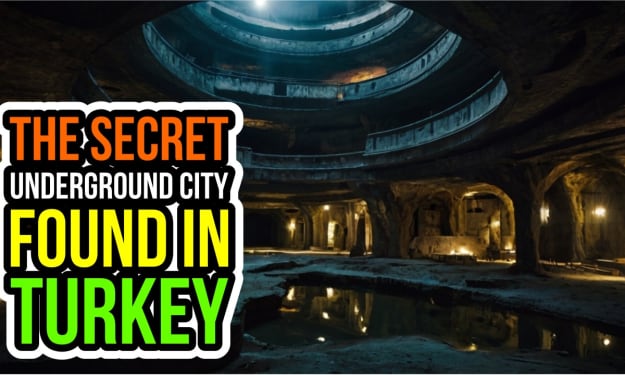Egyptian Aliens
Uncovering UFO Secrets Hidden in Ancient Pyramids

Giza Plateau, Egypt
The Great Pyramid, the only surviving wonder of the ancient world, is undoubtedly one of the most mysterious buildings on Earth. Regarding its construction and intended use, countless theories have been proposed. The amount of mathematical knowledge encoded in the Great Pyramid has amazed researchers. Egyptologists have been fascinated by its exact measurements and placement because it is more precisely aligned to true north than any other structure on Earth, being within 1/360th of a degree. Given the Earth's gradual axis shift, or procession, this exact alignment raises the possibility that it was even more precisely aligned to true north when it was first built.
The location of the Great Pyramid on Earth seems deliberate, even if it is not perfectly aligned. The Pyramid is centrally located on the Earth's landmass, as indicated by the fact that a great circle drawn from it through its cardinal and ordinal directions passes through more landmass than any other place on the planet. A thorough survey carried out in 1925 added credence to this, revealing deep geodetic information incorporated into the structure's design. The cubit, the unit of measurement in use, is equivalent to 1/25,000,000th of the Earth's polar diameter. The Great Pyramid's base perimeter scaled up to equal the Earth's circumference indicates that its dimensions also match those of the planet.
The Pyramid's design contains even more sophisticated formulas that have been revealed by recent satellite technology. The Great Pyramid's coordinates match the speed of light in meters per second—a striking match given the amount of Earth-related data incorporated into its design. The Great Pyramid was constructed with a degree of technological sophistication far beyond what is generally attributed to ancient civilizations, according to such accurate and sophisticated knowledge.
Valley of the Kings, Egypt; Taj Mahal, Agra, India; and King Pacal's Tomb, Palenque, Mexico
For an extended period, scholars have been captivated by remarkable resting places across the globe, like the Valley of the Kings, the Taj Mahal, and King Pacal's Tomb. While some theories suggest these sites may have deeper, possibly extraterrestrial functions, mainstream researchers view these sites as the final resting places of ancient leaders. The knowledge needed to build these enormous structures is frequently attributed to the gods in ancient texts and customs. The fact that these tombs are associated with spiritual energy, astronomy, and the possibility of other worlds raises the possibility that they are portals to alternate dimensions or the afterlife, even if their primary purpose was to house the dead.
It was once thought that being a living being was a chance to get ready for a life after this one. This idea is consistent with the theory that tombs could act as entryways for the dead to communicate with the afterlife, which is backed by the enigmatic ancient Egyptian texts.
Saqqara, Egypt
Saqqara, one of the biggest and oldest cemeteries in Egypt, is situated 20 miles south of Cairo on the west bank of the Nile River. Here is the pyramid dedicated to King Teti, the first of Egypt's sixth dynasty kings. The world's oldest religious writings, known as the Pyramid Texts, are found inside this pyramid. These 2400 BC texts tell the story of the pharaoh's soul's ascent to the heavens. Theorists of ancient astronautry propose that these writings gave the pharaoh instructions on how to visit other planets, suggesting a belief in soul travel beyond dimensions.
The Scarab Beetle
The scarab beetle, also known as the dung beetle, was considered a sacred symbol in the Egyptian deserts. Scientists discovered in 2013 that this two-inch-long insect navigates by following the Milky Way galaxy's light. Nonetheless, the scarab was already regarded by the ancient Egyptians as a sign connecting them to the gods 5,000 years ago. In Egyptian temples and hieroglyphics, scarabs are commonly seen as symbols of the god Khepri, who was thought to be able to move the sun across the sky in a manner similar to how they move feces balls.
Theorists of ancient astronauts speculate that the Egyptians' depiction of Khepri may have been influenced by firsthand interactions with extraterrestrial life, speculating that some of the carvings and images may have been based on such experiences.
Abydos, Egypt
Abydos is home to the ruins of the Osirion, a place where thousands of people worshipped Osiris, the god of the underworld. Osiris was believed to have been an Egyptian pharaoh and is commonly depicted with a winged solar disk. Some theorists suggest that these depictions represent an extraterrestrial event. There is speculation that Osiris was a highly advanced machine or robot, based on the legend of his mutilation and subsequent resurrection by Isis.
The Jed pillar, a power pillar that resembles a modern Tesla coil and is symbolic of Osiris. Some carvings depict Isis as commanding Osiris, suggesting a high degree of technological proficiency.
Delta, Egypt
Ancient Egyptians and contemporary researchers have been fascinated by the movements of the scarab beetle and its sacred symbolism in the desert sands. The scarab's use of the Milky Way to navigate and its incarnation as the god Khepri demonstrate the Egyptians' acute observational abilities and their understanding of the relationship between the natural and supernatural realms. Some ancient astronaut theorists suggest that some depictions may be based on actual, otherworldly experiences. They continue to investigate the possibility that these beliefs and symbols were influenced by actual encounters with extraterrestrial beings.





Comments
There are no comments for this story
Be the first to respond and start the conversation.